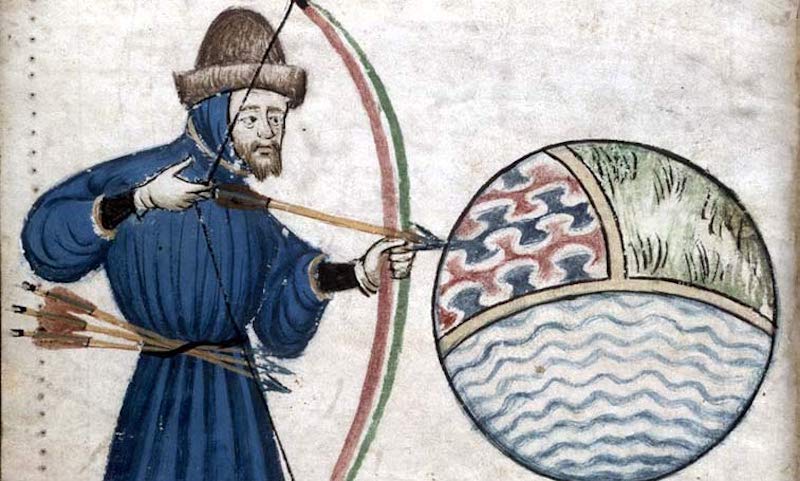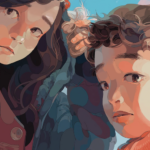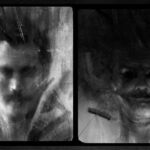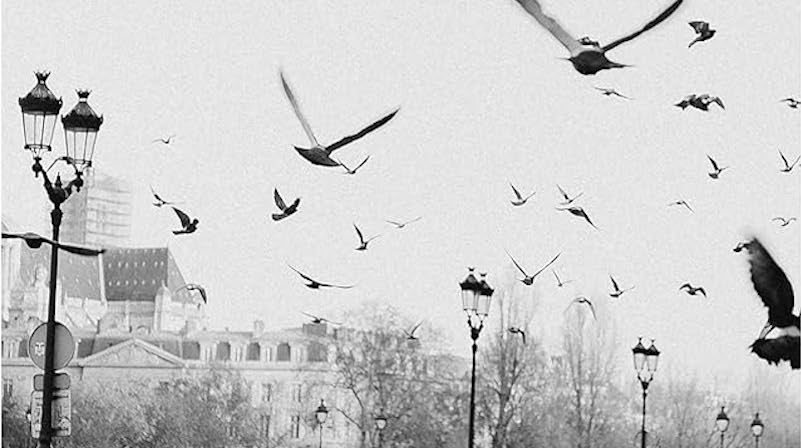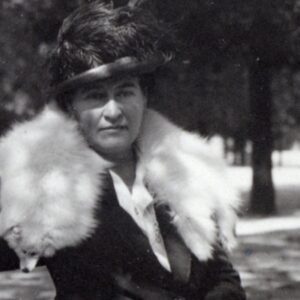Archival Romance: On Finding Love in the Papers of an Obscure Medieval Poet
"This spring, I fell in love with John Gower, who died in 1408."
This spring, I fell in love with John Gower, who died in 1408. For months I’d been reading his poems in their modern print editions with a scholarly disinterest. Then at the Huntington Library one morning, my stomach fluttered when I opened the cover of a fourteenth-century manuscript of his most famous work, Confessio Amantis, to a blurry illumination of a dreaming Gower, asleep. Since that day in Pasadena I’ve been talking about him breathlessly, chasing him through centuries of scholarship, tracking his records across continents in archives from California to Kent.
What is it about the archive that makes us fall in love? Why is it, as Saidiya Hartman puts it, that book supports and acid-free boxes make us dream of “a romance that exceed[s] the fictions of history—the rumors, scandals, lies, invented evidence, fabricated confessions, volatile facts, impossible metaphors, chance events, and fantasies that constitute the archive”? No doubt, archival research is occasionally extremely tedious—transcribing difficult handwriting can be a more effective sleep aid than melatonin—but most of the time it’s a unique thrill. Turning over folios or examining the wax seal of a medieval charter is a sensual encounter; Arlette Farge calls it a “physical pleasure [in] finding a trace of the past.” Parchment, the predominant material for medieval writing, is made of animal hide, so studying Gower’s manuscripts and life records means I’m often encountering him, literally, through the touch of skin on skin.
I’m far from the first person to swoon at the masses of papers, documents, and manuscripts that populate historical and cultural institutions across the globe. A smattering of novels has emerged in the past quarter century that stage a quest for knowledge in the low lighting and tense intimacy of a quiet study room, “unbashedly interpret[ing] the past through its material traces” and constituting a literary genre that Suzanne Keen calls the “romance of the archive.” In these books—A. S. Byatt’s Possession, Elizabeth Kostova’s The Historian, Isaac Fellman’s Dead Collections, to name a few—the narration of history often intertwines with personal love stories until the two threads become virtually indistinguishable. Lately, I’ve been reading as many as I can get my hands on.
While the researchers (or archivists, depending) almost always fall in love with each other, on some fundamental level, these love stories are always unrequited: a research object can entrance a scholar, but it can never really belong to her. Any encounter with a document in the archives—whether a nineteenth-century letter or a medieval court document—is an attempt to reconstruct the past from fragments that are only touchable and holdable in the reading room for an hour or two. Byatt plays on this paradox in her 1990 classic Possession, when one of the main characters, Roland, finds himself “seized by a strange and uncharacteristic impulse” to pilfer the previously undiscovered letters of a nineteenth-century poet out of a special collections library, catalyzing the adventure that will lead him to become equally possessed by his fellow scholar, the cold and beautiful Maud. Neither knowledge nor love should be mistaken for ownership, Byatt seems to suggest, though Maud ends up with the letters at the end of the day. Scholarship and romance can operate according to similar logics of jealousy and compulsion.
A quixotic longing underlies these books. Characters may have special access to collections and libraries, but the pursuit of history is nonetheless ingrained with a gnawing sense of loss. Archival romance novels often center on a search for someone or something that is missing; to quote Sol, the trans archivist at the center of Fellman’s fan-fiction-steeped 2022 novel, “in general what you find in archives is the absence of a body, the chalk outline of a life… You can almost taste the closeness of the body sometimes, almost feel the glossy heat of it, but never quite.” Historical research is always a kind of heartbreak; the more I learn about Gower’s works and life, the more I nurse a yearning for all I’ll never understand. And the past can be tremendously brittle; much of what we can know rests in records and account books and literary manuscripts that exist in fragile, finite copies. Perhaps it makes sense then that both Sol, whose love story with Else, a grieving donor to the archive, will lead him to uncover the source of a preservation issue, and the blood-sucking antagonist of Kostova’s book are vampires. Every time we use archival material, the ink fades a little from light exposure, the internal structure of the book weakens a little, no matter how gently we handle the spine. Like parasites, those of us who work with archives slowly leech life out of our materials, loving our subjects to death.
Given that the personal and romantic is always also historical, these novels are often intensely political. For Keen, who focuses on contemporary British literature, the romance of the archive necessarily constructs itself in relation—whether affectionate or antagonistic—to England’s imperial legacy. The multigenerational The Historian (2005), to give another example, centers on the story of two young researchers, Paul and Helen, who fall in love during a sprawling, trans-European quest to uncover the identity of a mysterious stranger who murders Paul’s academic mentor. Along the way, sedimented history, from the vestiges of the Ottoman Empire to the conflicts of the Cold War, constantly shape their lofty pursuit of knowledge and justice. The past and the present mutually construct each other, Kostova reminds us, inseparable from the passions that incite both love affairs and geopolitical strife.
Yet the archive’s sparkle can also leave us misty-eyed, occluding a political vision. I’ve been guilty of this myself. Gower was (it would seem from the texts he left behind) a morally stuffy money-grubber, with a vicious attitude toward peasants, who may have married a woman half his age. If I knew him when he was living, I probably wouldn’t have liked him at all. But from a distance of six hundred years or so, I find myself constructing enemies-to-lovers plotlines. Perhaps it’s just impossible to pay this much attention to someone and not catch an “archive fever,” as Jacques Derrida calls that fierce and consuming nostalgia for the past. Or maybe in a profession as solitary and quiet as academia, it’s all too easy to forget the present and become enamored of an intellectual figment or a ghost.
Last week, at the Lambeth Palace Library in London, I read Gower’s last will and testament, recorded prior to his death, then walked along the bank of the Thames to visit his final resting place. Pushing through the crowds at Borough Market sampling fruits, paella, and jams, I ducked into Southwark Cathedral. The tomb, to the left of the nave, is a wooden effigy of Gower’s supine body, painted in green, red, and gold. His eyes are open, and his head rests not on a pillow, but on books of his poems. I thought of a line from the Confessio, when Gower imagines his books will endure when he is “dede and elleswhere” for future readers to find in some “tyme comende after this” (time coming after this). I felt shy then, implicated in his transhistorical glance.
Eventually, my boyfriend came to collect me on his way home from the British Library. On our way out of the cathedral, I turned and blew Gower a kiss. My boyfriend laughed at me, then reached out and brushed a piece of hair behind my ear. I was alive, the year was 2023. His skin was warm and soft; it felt nothing like parchment at all.

